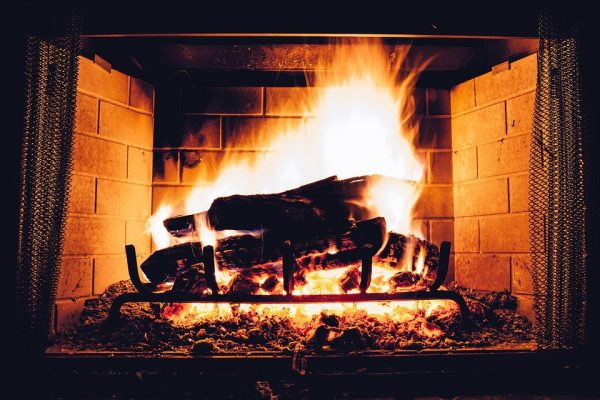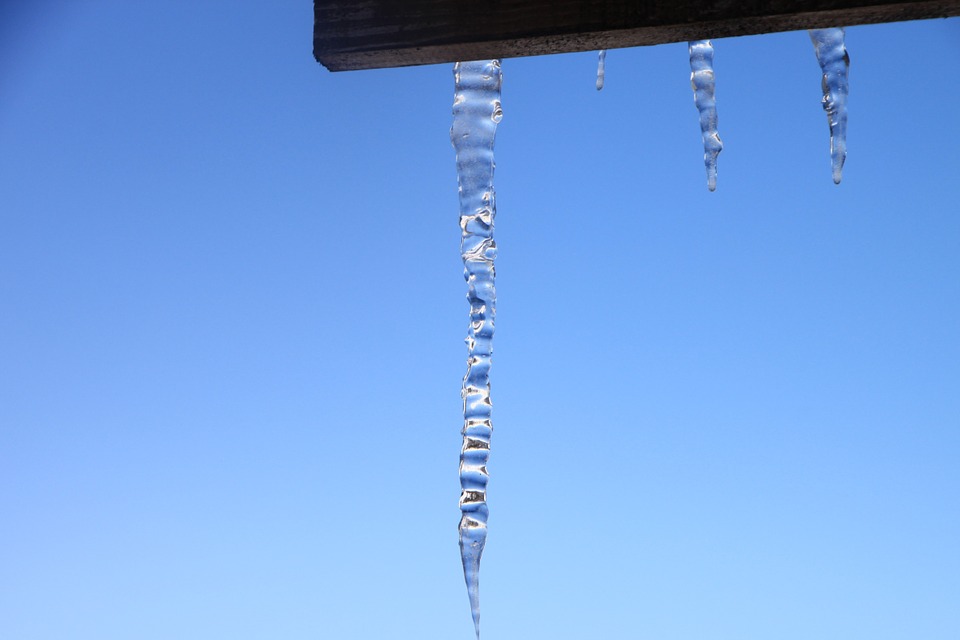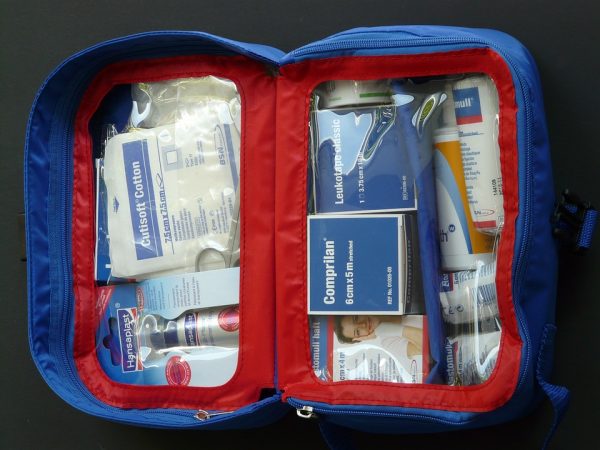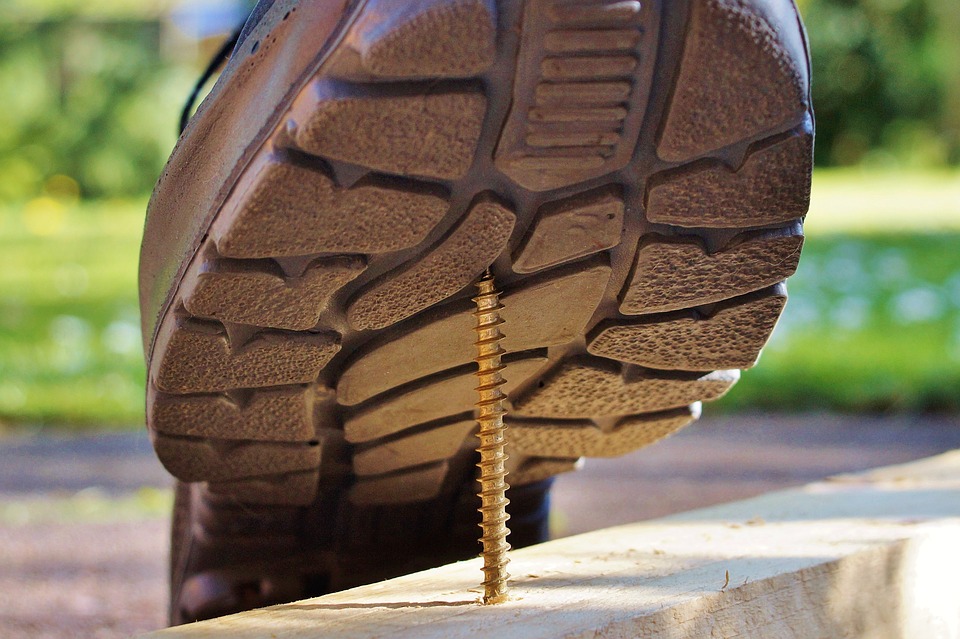Month: January 2018

Winter Activities that Put Your Home at Risk of Fire Damage
Winter is the prime season for house fires. According to the National Fire Protection Association, nearly a third of all total-loss house fires occur in the months of December, January, and February. While most fires are small, fire damage can still be costly and potentially injure someone in your home. The good news is that most house fires are easily preventable. Here are some winter activities that can put your home at risk of fire damage and what you can do to avoid a dangerous situation.
-
Space Heaters
Most space heater accidents happen while everyone is sleeping. These toasty devices may be a godsend for some bone-chilling rooms, but they are also the leading cause of house fires in the winter. Here are three rules to always follow when using space heaters:
- Make sure your heater is at least three feet away from anything flammable
- Plug your heater directly into the outlet rather than an extension cord
- Do not go to bed with the space heater on.
-
Cooking
Stovetop cooking is the leading cause of house fires year round, and most occur within the first 15 minutes of cooking. Never leave the room when you have a hot pan on the stove eye. If oven mitts, dish towels, or other flammable items are around, move them at least three feet away. If you’re suddenly faced with flames and spattering grease, the worst possible thing to do is panic. Turn off the stove, put on a pair of elbow-length cooking gloves, cover the pan with a lid, and let the oil cool down. Also, have a fire extinguisher handy.
-
Electrical Cords
We live in a world full of electronics. Because of that, we add an extension cord or adapter to accommodate all of our appliances. Feel the cords to make sure they’re not too warm or overloaded. Also, never run extension cords under rugs, tape them to floors, staple or nail them to walls, or string several together to make an extra-large extension cord.
-
Fireplaces
Fireplaces and chimneys should be checked on a regular basis. However, always make sure to extinguish the fire completely before leaving or sleeping, and keep flammable objects at least five feet away.
-
Candles
The main problem is not the candles, but how we use them. Too many people light them on top of tablecloths or near curtains, which can easily catch fire. Never leave a candle burning unattended, or switch to battery-powered ones.
Precautionary Measures
-
Install and maintain smoke detectors
Each room inside your home needs a working smoke detector, including the basement. Test them every few months and completely replace them every ten years.
-
Have a fire extinguisher and know how to use it
Having a fire extinguisher will do you and your family no good if you do not know how to use it properly. Watch videos online and know how to properly handle one and where to spray in case of emergency. Local firehouses and firefighters will also show you how to use one.
-
Plan an escape route
Know every way to escape from your home in case of a fire. The front door is not always an option. Know how to break away from bedrooms and windows.
At Insight Restoration, our number one goal is to keep you and your family safe from fire damage. If damage does occur on your property, the key to proper clean-up is to act fast. Call us at 208-427-3042 and we’ll send our experts out immediately to inspect the damage.
Is Your Property in Danger of Ice Dams?

Here in Idaho, we have harsh winters with a lot of snow and varying temperatures. This is the perfect recipe for snow to accumulate on your roof and for ice dams. In valley areas, ice dams can melt and easily slide away because temperatures do not rise sharply. With no warning, the ice melts and causes roof damage and leaking. In higher elevations, ice dams are a major issue due to the large amount of snow that begins accumulating on the roof early in the winter season. The more snow and ice, the worse the ice dams can get.
Just because your roof is new doesn’t mean you cannot have an ice dam. Most ice dams develop on the edge of your roof. Be sure to monitor the weather and your roof for signs of ice dam formations. Here are some signs that your property may be in danger:
- If the icicles are confined to the gutters and there is no water trapped behind them, then an ice dam has not yet formed. Icicles are however a precursor to ice dams. Depending on their location and size, icicles may also pose a danger if they fall off.
- If you notice water stains on the ceiling of exterior walls, that may be an indication that an ice dam has formed an water has penetrated the roof membrane.
What are Ice Dams?
An ice dam is a wall of ice that forms at the edge of the roof, usually at the gutters. When it forms, the water backs behind the ice dam and creates a pool. This pool of water can leak into your home and cause damage to walls, ceilings, insulation and other areas.
What Causes Ice Dams?
Ice dams are usually caused by a heavy snowfall and improper ventilation in the attic. This causes warmer areas in your attic. Even when the outside temperature is well below freezing, snow will begin to melt around these areas. When snow on your roof starts melting, water runs down your roof underneath the snow until it reaches a “colder” section like the soffits or gutters, then it begins to freeze again. This process of thawing and refreezing is what causes an ice dam.
Preventing Ice Dams
Properly ventilating and insulating the attic is the best way to prevent ice dams. Here are a few simple steps that can also help prevent ice dams and condensation in your attic:
- Prevent warm, moist downstairs air from coming into the attic
- Seal all openings that may allow vapor to rise into the attic.
- Keep the attic air temperature below freezing when the outside temperature is in the low 20’s.
- Provide good ventilation to replace warm attic air with cold outside air.
- Use a roof rake to regularly remove the snow from your roof.
- Keep the gutters clean of leaves.
If your property is in danger of ice dams, call the experts at Insight Restoration at 208-427-3042. We have the proper equipment and experience needed to evaluate the situation and offer a lasting solution for your home.

How to Prepare an Emergency Kit for a Disaster
A disaster such as a fire, flood, earthquake, or even a man-made disaster can strike at any time. It’s never too early to talk to your friends, families, and neighbors about emergency plans. Those plans should also include an emergency kit, no matter where in the world you live.
The geographical issues your family may face are among the most important factors to consider when packing an emergency bag. In North Idaho’s Booner, Boundary and Kootenai Counties face mudslides and flooding as their number one disasters. They have guidance and materials for virtually every emergency scenario: biological and chemical attacks, cyber-incidents, droughts, landslides, home fires, snowstorms and even space weather.
Basics
- Water – Have at least three days’ worth of water for every person in your family. Also, invest in a portable filtration system in the event you have to suddenly move.
- Food – Three days’ worth of nonperishable food for every person in your family is recommended. Nonperishable food can be energy bars, crackers, peanut butter, canned fruit, meat, or vegetables.
- First-Aid Kit
- Portable Lighting – Flashlights and tea candles are ideal for emergency lighting around a home. If you can purchase a headlamp, these can last for up to 200 hours on three AAA batteries and frees up both of your hands.
- Emergency Devices – A battery-operated radio and emergency whistle are perfect to have on hand if your cell phone cannot get service.
- A Face Mask – Airborne debris, fumes, or gas from accidents or natural disasters can cause respiratory problems.
- Solar Chargers – Flooding may cause you to have restricted access to electrical outlets or reliable power. Solar chargers will charge devices as large as a tablet with a day’s worth of sun.
- Miscellaneous Items – Always pack up to three days’ worth of personal medications, especially life-saving ones. Include any equipment or supplies needed to help you survive the next 72-hours. Make sure you also pack a spare pair of glasses, sanitary towelettes, paper maps of your area, tweezers, scissors, duct tape, wind-resistant matches, and cash, traveler’s checks, or change.
Extras for an Emergency Kit
- A Multi-Tool – These tools can do everything and can even help with performing first-aid, building fires, and repairing electronics.
- Mylar Blankets – These blankets are windproof, waterproof, and capable of reflecting more than 90% of body heat.
- Bleach – This is a perfect disinfectant and can even be used to treat water when diluted.
- Specific Needs – Take into account your families’ specific needs. Infant formula and diapers shouldn’t be overlooked and can be difficult to find on the go, especially in an emergency. If you have children, be sure you pack something to occupy them.
Property damage can happen unexpectedly. It is important to restore your property as quickly as possible to prevent further damage in the future. It’s even more important to prepare for an emergency in the event of a disaster.
At Insight Restoration, we have over 50 years of collective experience restoring properties to their pre-loss condition. Equipped with a highly-trained team of certified technicians, we are available to take your call 24 hours a day, seven days a week. Your safety is our number one priority. Call us today at 208-427-2962.

Five Questions You Should Ask about Mold Removal
Are you concerned with mold in your home? If you’ve seen the telltale patches of green or black spores growing in your basement, bathroom, or kitchen, then you might have a mold problem. If you are concerned that you have mold, it is imperative that you not ignore the problem. Your mold is not going to go away on its own. It will only get worse. The mold will continue to grow and expand. If you do not get rid of the mold, you will subject yourself and your family to unhealthy air quality. In the end, the cost of removing the mold will be more expensive and your health could be compromised.
Quotes
The first question that must be answered is the overall cost of the mold removal. Even though you don’t have a lot of time, you should get more than one quote for the mold removal. It is important to know that the company you select is not trying to take advantage of you. However, the cheapest bid is not always the best bid. You need to not only consider the cost but consider which company will provide the best service.
Moisture
When getting these quotes, you must find out what the individual companies believe is behind the mold. If the company has no idea why the mold is occurring or has no plans to get rid of the reason behind the mold, then this is not the company for you. If there is mold, there is moisture. You must resolve where the water is coming from to prevent a future recurrence.
Certified and Insured
The next question that must be answered is whether the company is certified and insured. Anyone can claim to be an expert. However, not everyone can adequately remove your mold problem. Regarding insurance, the company needs to have more than general liability insurance. You want a company with professional liability or errors and omissions insurance. Don’t take their word for it on their certification or insurance. Ask to see a copy of both. What should you look for when they provide you with proof? You should look to see what certification they carry, and which organization provided it. The same goes with insurance. You should make sure that the insurance is provided by a reputable company.
Expert
If your mold removal expert is refusing to work with anyone else, he or she is not a good fit for you. You should not be lured into the one-stop shop philosophy. A better result can be found when the mold removal expert is willing to get assistance from experts from other fields if the need arises. For example, if your potential mold removal expert believes that your mold situation is the result of a structural issue, he should not be jacking up your house to fix it. The mold expert needs to contact a foundation expert.
Inspections
The last question that needs to be answered is regarding inspections. Your mold removal expert needs to agree that post removal testing will be done by another party. Yes, it would be cheaper to stick with the same company. However, when you get another company to review their work, you will get better results. In addition, your mold removal expert needs to agree to certain testing parameters before doing the job. Then, when the work is completed, those parameters must be met before payment will be completed. This agreement protects you from shoddy work. Once the work is done, then the post-removal team will determine if the removal experts reached the goals that were previously set. Only after those goals have been reached should payment be made.
Contact Insight Restoration Now
If you have mold, it is important to not ignore the problem. Select the right company to protect your property and family. You must do your homework.
Insight Restoration is an expert in the field of mold removal. Insight Restoration is an experienced industry leader. To get started with mold removal, call 208-427-2962.

Tips for Preventing Injury when Completing Storm Damage Cleanup
Any type of storm damage cleanup can result in a hazardous situation. In many cases, hazards are not always obvious to the untrained eye and attempting cleanup can result in injuries. Damage can be anywhere, from a total loss of a property to damage to just one room, a roof or patio, or windows. Trees and branches may even need to be removed to prevent further damage and injury. Calling the experts at Insight Restoration is the first step homeowners should consider. However, we know immediate action may need to be taken just to locate a phone! In serious situations, here are some tips to help prevent injury when trying to complete storm damage cleanup:
Get the Right Safety Gear
- Hard hats
- Goggles
- Face masks or respirators
- Work gloves
- Waterproof or steel toe boots
- Fire extinguishers
Potential Hazards Where Injuries Can Occur:
- Contaminated water hazards – Sewage can easily spill into the water during severe storms. Not only sewage, but dangerous spills including bleaches, chemicals, or gasoline can also contaminate waters.
- Airborne inhalation hazards
- Drowning – Flooding water poses drowning risks for everyone, regardless of their ability to swim.
- Animal and insect bites – Severe storms can displace animals, insects, and reptiles. To protect yourself and your family, be alert and avoid contact.
- Wounds – Deep waters or even debris on the ground may contain sharp objects, such as glass or metal fragments that can cause injury and lead to infection.
- Electrical Hazards – Fallen power lines are common during storms. Never drive through standing water if downed power lines are in the water. Avoid contact with overhead power lines during cleanup and other activities.
It’s important to remember to prevent injuries during storm damage cleanup. Always wear protective clothing. Wear sturdy shoes, long sleeves, and gloves whenever you handle, walk around, or are near debris. Many of the injuries caused by storms result from stepping on nails in and around damaged homes and buildings.
Attempting storm damage cleanup on your own is never recommended. If necessary, please ensure you have proper protection and avoid dangerous situations at all costs. As soon as possible, call the professionals at Insight Restoration at 208-427-3042 and we’ll respond immediately.

